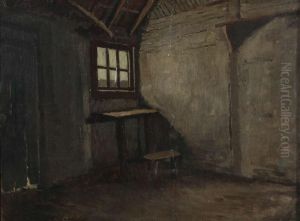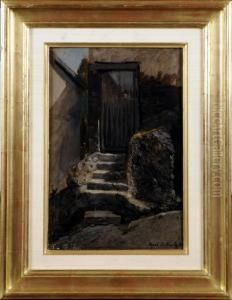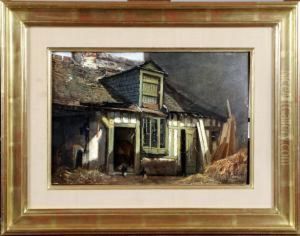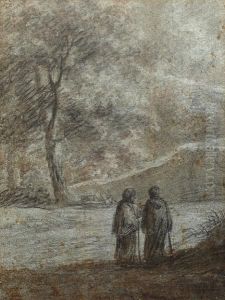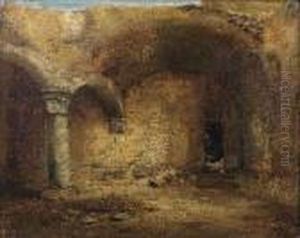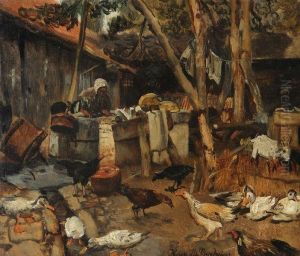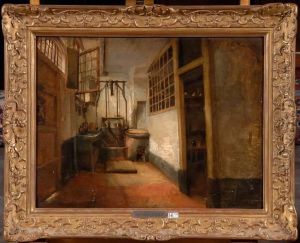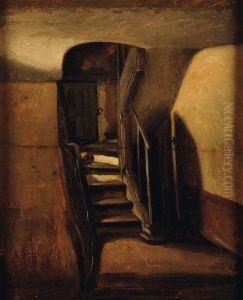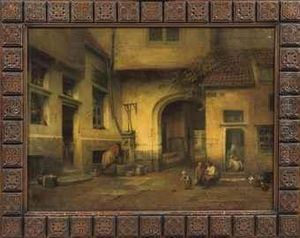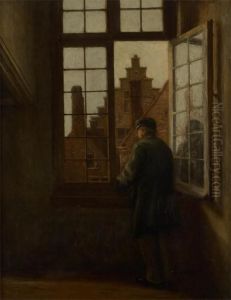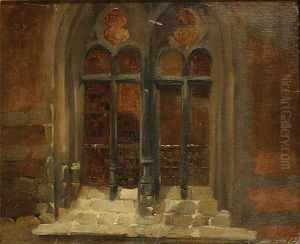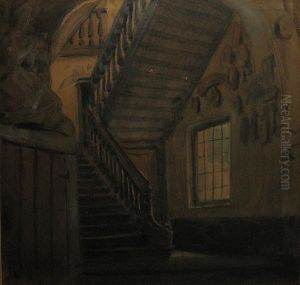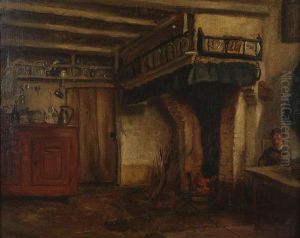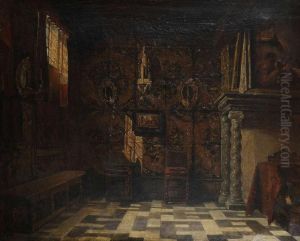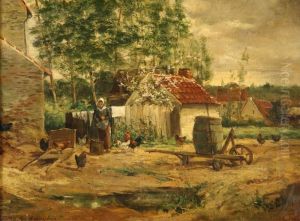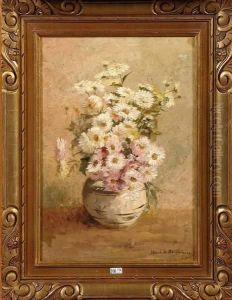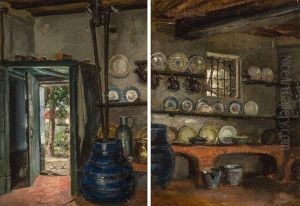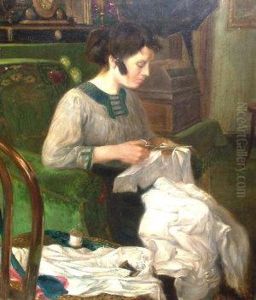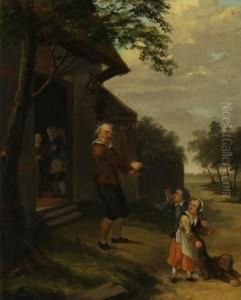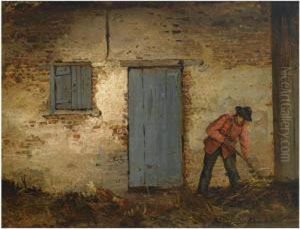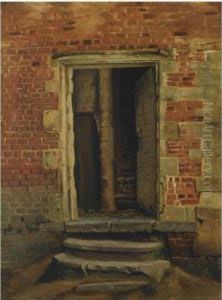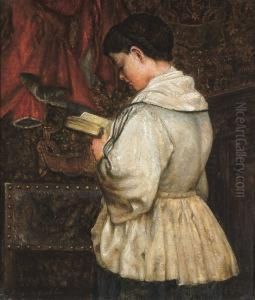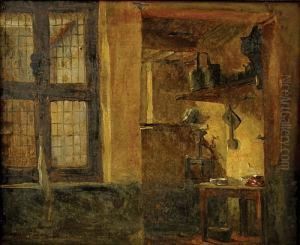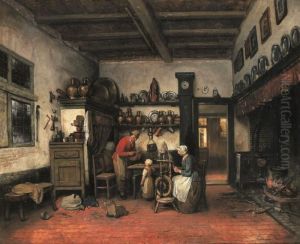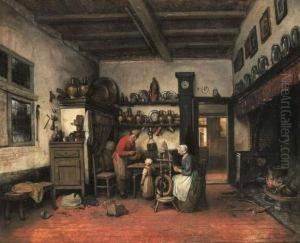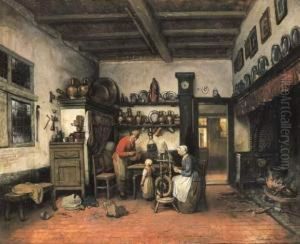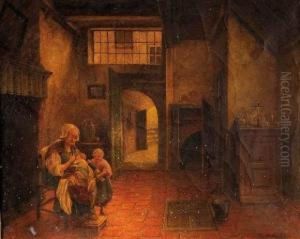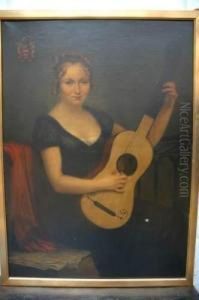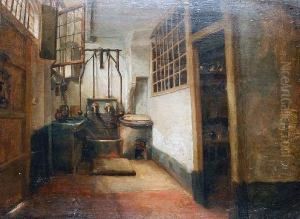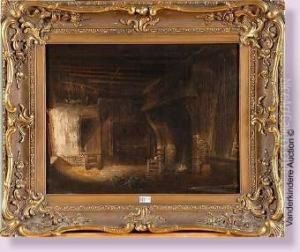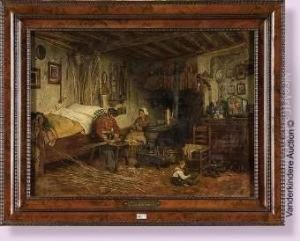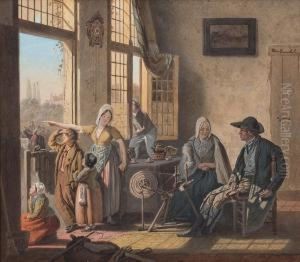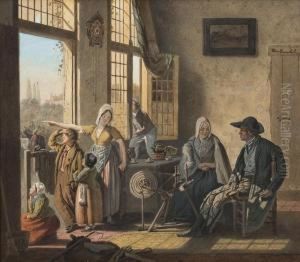Henri De Braeckeleer Paintings
Henri De Braeckeleer was a Belgian painter and the son of the painter Ferdinand de Braeckeleer and brother of the painter Ferdinand de Braeckeleer the Younger. Born in Antwerp on July 12, 1840, he was a notable figure in the artistic scene of Belgium during the 19th century. Trained under his father's guidance, Henri developed a style that was deeply rooted in the Flemish tradition, yet he was also influenced by the contemporary realist movements and the works of the Dutch masters.
De Braeckeleer's early works often depicted historical and genre scenes, and he displayed a remarkable talent for detail and atmosphere. However, his focus shifted over time towards more intimate and domestic subjects. His paintings frequently capture quiet moments within interiors, where the play of light and shadow is rendered with exquisite care. He was particularly adept at using natural light to create mood and to highlight the textures of the everyday objects within his compositions.
Henri De Braeckeleer's artistry was recognized by his contemporaries, and he was associated with a group of artists known as 'Les XX' or 'Les Vingt', a Belgian avant-garde group that sought to promote new artistic ideas in the late 19th century. Despite his association with these progressive artists, De Braeckeleer's own work remained relatively traditional and did not fully embrace the more radical elements of the avant-garde movement.
Throughout his career, De Braeckeleer struggled with health issues, which affected his output and visibility in the art world. His works were appreciated for their quiet beauty and the sense of solitude they often conveyed. Henri De Braeckeleer died on January 23, 1888, in his native city of Antwerp. After his death, his work received renewed attention and has been celebrated for its contribution to Belgian art, bridging the gap between tradition and modernity.
